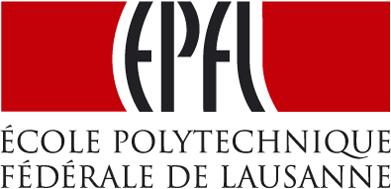Team:EPF-Lausanne/Team
From 2009.igem.org
(→What we want to do) |
(→What we want to do) |
||
| Line 47: | Line 47: | ||
== '''What we want to do''' == | == '''What we want to do''' == | ||
| - | Light-sensitive proteins can easily be found in nature, but they have never been cloned into other cells. | + | Light-sensitive proteins can easily be found in nature, but they have never been cloned into other cells. In this project, our aim is to design a fusion protein that would allow genetic regulation through light control. |
| - | + | Therefore we are working on cloning strategies that would allow us to fuse a light-sensitive domain (LovTAP in our case) with a regulatory domain (like the Trp operon). The idea is to allow transmission of the conformational change induced by light (on the light-sensitive domain) to the DNA-binding domain. This transmitted conformational change would then result in an increase or decrease of the regulatory domain's affinity for the DNA promoter site. | |
| - | + | The overal effect would thus be a genetic expression controlled by light! There would be many applications to such a "switch" : it could kill some bacteria at certain point, stop their growth, or make them express some proteins... | |
| - | + | ||
| - | The overal effect would thus be a genetic expression controlled by light! | + | |
To improve the change induced by light (that is generally very unstable), we also plan a modeling part where the aim is to find which residue we would have to mutate in order to have a stable protein after the switch. | To improve the change induced by light (that is generally very unstable), we also plan a modeling part where the aim is to find which residue we would have to mutate in order to have a stable protein after the switch. | ||
| + | |||
| + | The advantage of such a system is that we could apply the light on a system and then remove it (not like if we added some liquid on the cells). | ||
== '''Where we are from''' == | == '''Where we are from''' == | ||
Revision as of 12:25, 21 July 2009
Who we are
|
Advisors:
|
What we want to do
Light-sensitive proteins can easily be found in nature, but they have never been cloned into other cells. In this project, our aim is to design a fusion protein that would allow genetic regulation through light control.
Therefore we are working on cloning strategies that would allow us to fuse a light-sensitive domain (LovTAP in our case) with a regulatory domain (like the Trp operon). The idea is to allow transmission of the conformational change induced by light (on the light-sensitive domain) to the DNA-binding domain. This transmitted conformational change would then result in an increase or decrease of the regulatory domain's affinity for the DNA promoter site.
The overal effect would thus be a genetic expression controlled by light! There would be many applications to such a "switch" : it could kill some bacteria at certain point, stop their growth, or make them express some proteins...
To improve the change induced by light (that is generally very unstable), we also plan a modeling part where the aim is to find which residue we would have to mutate in order to have a stable protein after the switch.
The advantage of such a system is that we could apply the light on a system and then remove it (not like if we added some liquid on the cells).
Where we are from
We are all studying at EPFL aka the Swiss Institute of Technology of Lausanne. The campus is located near the shore of lake Geneva in the surroundings of the city of Lausanne, 50 km away from Geneva.
 "
"


